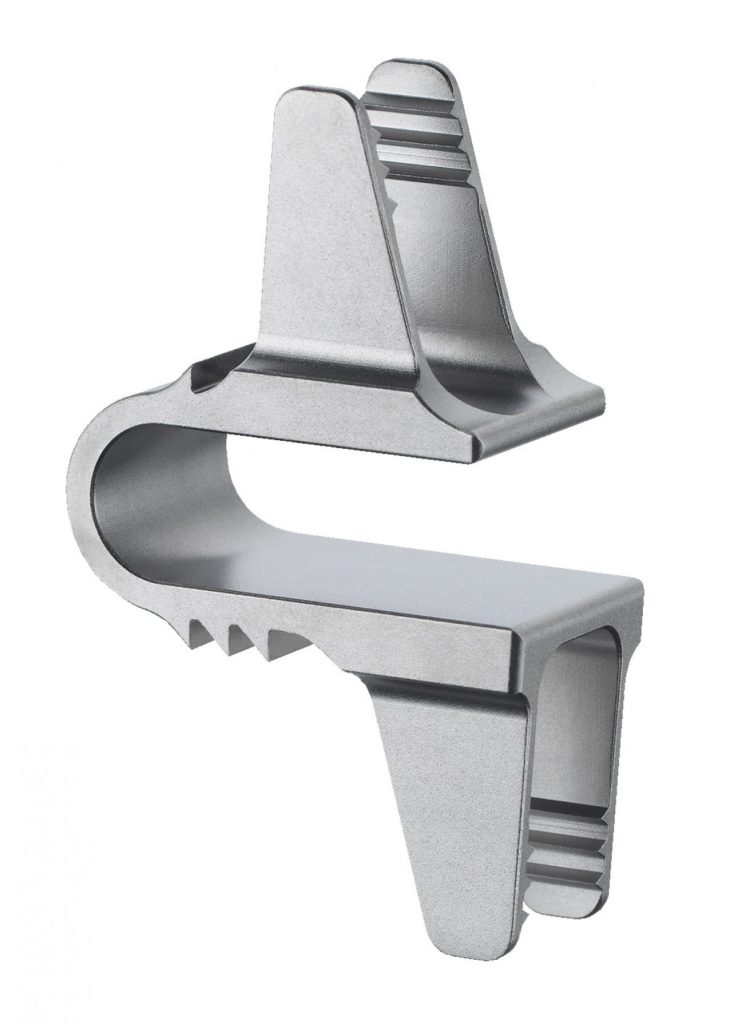The Coflex procedure is performed through a small, midline incision in the lower back that allows for a minimally invasive approach for treating your lumbar spinal stenosis. The Coflex implant:
- Is inserted directly following a surgical decompression by your spine surgeon
- Rests on laminar bone in between two vertebrae, where the “U” is closest to the spinal canal
- Maintains foraminal height and off-loads facets
- Allows the bones to move in a controlled manner, preserving natural motion
- Reduces trauma to your back, decreases the amount of blood loss during surgery, and allows for a shorter hospital or outpatient surgical center stay compared to fusion
Benefits vs. Decompression
Decompression is appropriate for many patients; however, in order for the surgeon to adequately decompress the spine, all bony and neural elements putting pressure on the spinal nerves causing the pain should be removed, which may cause the spine to become unstable. Your surgeon can implant the motion-preserving coflex device directly after a surgical decompression to help keep your spine stable.
In a European study, coflex was compared to decompression alone. The coflex device proved to extend the durability and sustainability of a decompression procedure out to two years. The coflex patients experienced:
- Superior composite clinical results (combination of 4 clinically relevant factors: disability improvement, neurological maintenance or improvement, no subsequent interventions, no device-related complications)
- Superior walking distance improvement (2.4x more compared to decompression alone)
- Superior foraminal and disc height maintenance (allowing nerves to exit the spinal canal freely)
- Significantly less epidural steroid injections post-surgery (decompression patients had 3.3x more)
*Clinical cases are unique and individual results may vary. Claims based on ESCADA data, published in Journal of Neurosurgery: Spine. Volume 28 Issue 4, April 2018. Data on file at RTI Surgical, Inc.
Benefits vs. Fusion
Fusion is appropriate for many patients; however, motion is lost at both the treated and adjacent segments, multiple pieces of hardware and bone graft are required, and the recovery process can be long and difficult. Your surgeon can offer Coflex as an alternative to fusion for moderate to severe lumbar spinal stenosis with <Grade I spondylolisthesis patients.
In a U.S. FDA study, Coflex was compared to pedicle screw fusion. The Coflex device proved to be a viable alternative treatment option compared to pedicle screw fusion out to 5 years, and results showed that coflex patients performed as good as if not better in all clinical measurements. The Coflex patients experienced:
- Leg and back pain relief (both immediately and long-term)
- Less time in the operating room, less blood loss, and fewer days in the hospital
- Faster relief of symptoms and quicker recovery (pain and function measurements)
- Maintenance of range of motion at both treated and adjacent segments
Clinical cases are unique and individual results may vary. Claims based on FDA PMA P110008, October 2012. Data on file at RTI Surgical, Inc.

